As an alternative to nest boxes, chainsaw-carved cavities (also known as chainsaw hollows) are an innovative approach for creating additional habitat opportunities for arboreal, hollow-dependent species. In SEQ, over 130 species of animals have been identified as hollow-dependent. Given that historic land clearing has resulted in the large-scale loss of mature hollow-bearing trees throughout Australia, innovative solutions for providing additional hollows are vital.
Natural hollows that form in trunks or branches of mature trees provide vital habitat for a diverse range of vertebrates and invertebrates including birds, frogs, gliders, microbats, possums and pythons. Large hollows can take upwards of 100 years to form, meaning large trees with hollows can often be a limited resource. The best option for ensuring these vital habitat resources remain is by leaving large, veteran trees in place, regardless of whether they are living or dead.
Where trees must be cleared, the addition of artificial hollows (either chainsaw hollows or nest boxes) can assist with providing suitable habitat for hollow-dependent species. They can be installed in trees that have not formed natural hollows or can be used to provide supplementary hollows in addition to naturally formed hollows. Chainsaw hollows can be carved into live or dead trees. When a tree requires limb reductions for safety, this provides an ideal opportunity to install chainsaw hollows.
Creating chainsaw hollows needs to be done by a highly skilled arborist who will first decide if hollows can be created without causing damage to a live tree. Generally, a large tree requiring branch reductions for safety purposes will be selected or a dead tree (stag). The arborist will assess a tree looking for any structural weaknesses and determine how to safely carve hollows. Chainsaw hollows can last the life of a tree compared to an average service life of ten years for a timber nest box, so it is important that they are installed correctly for their long-term effectiveness.
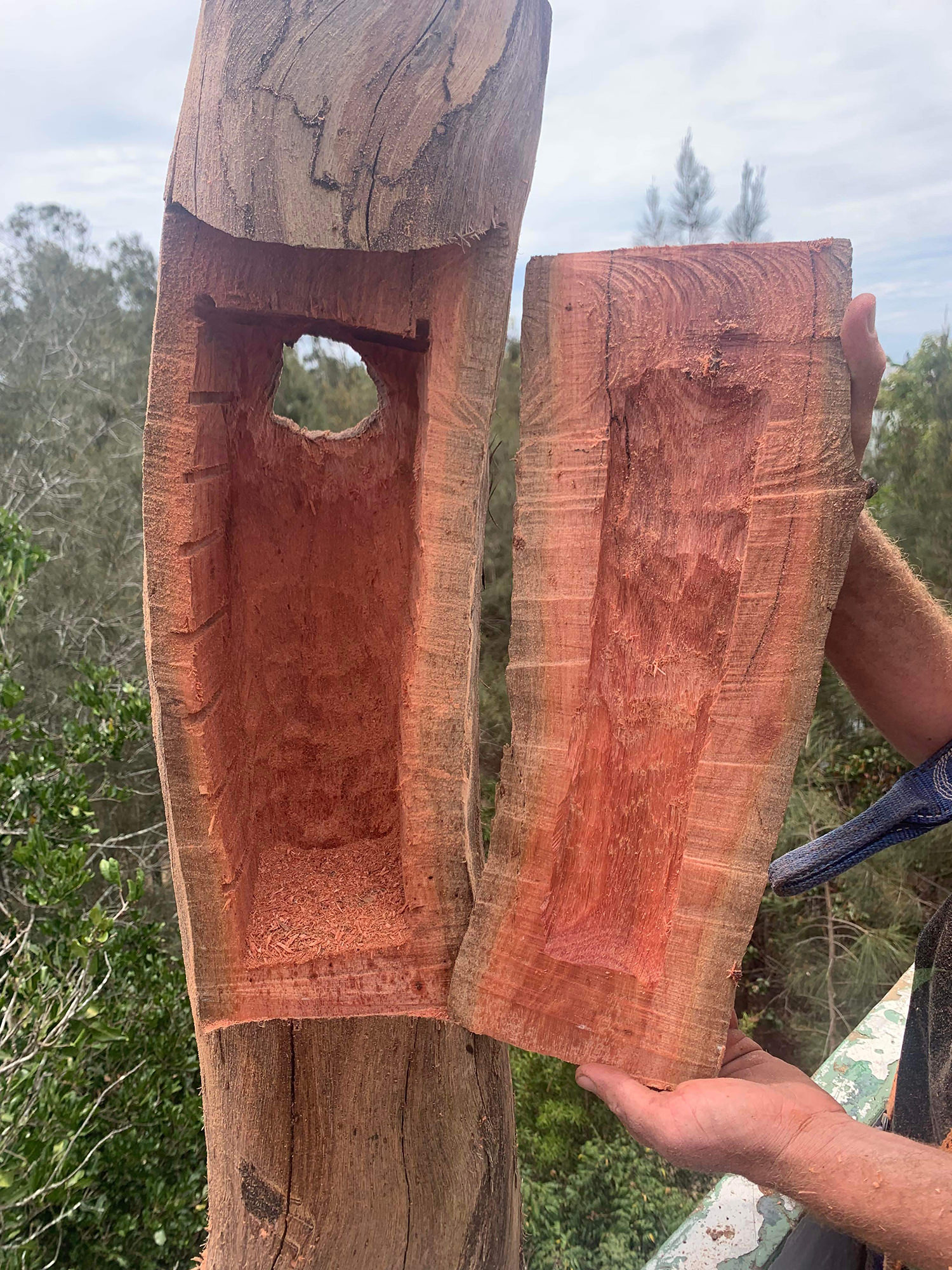
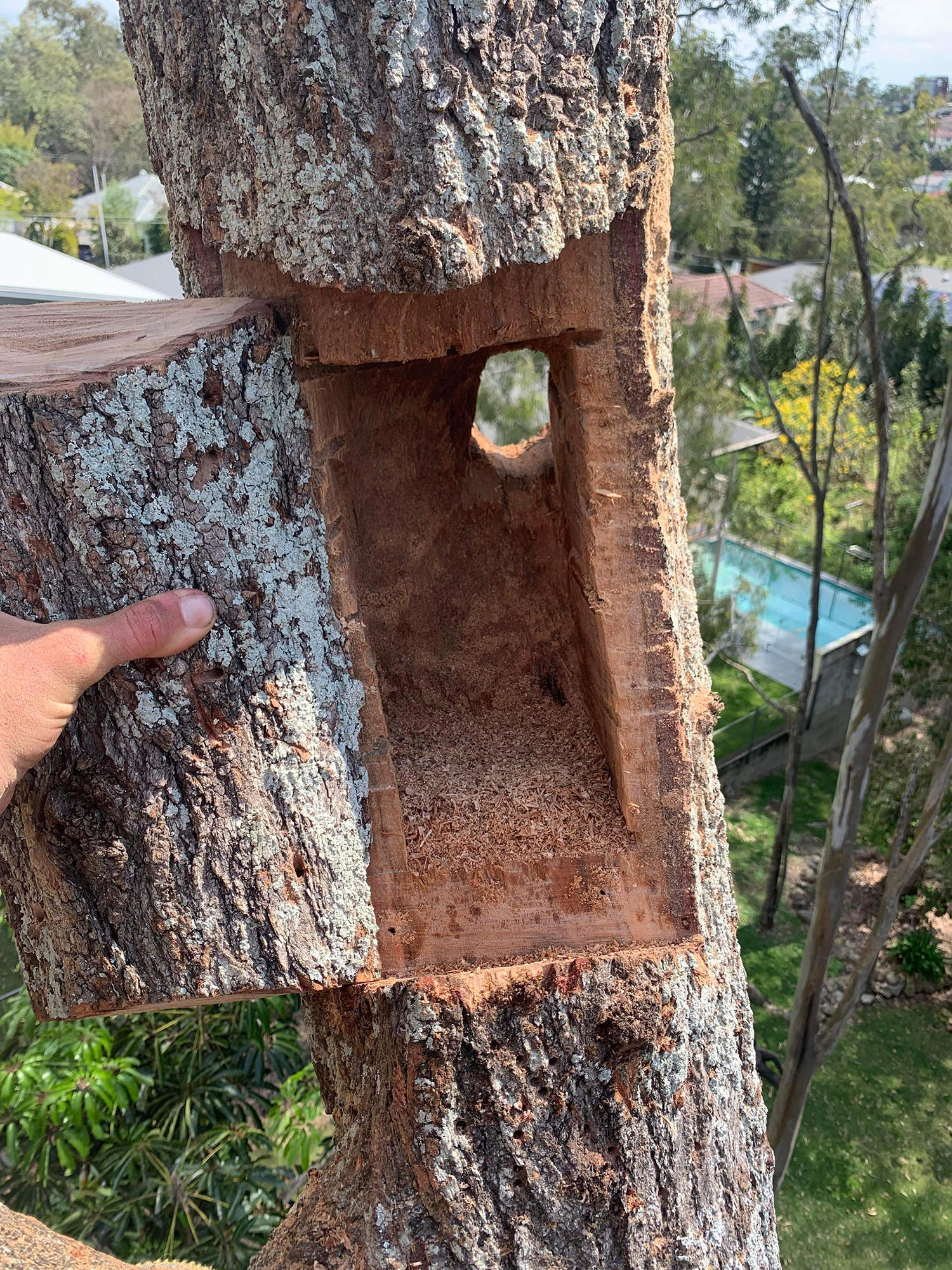
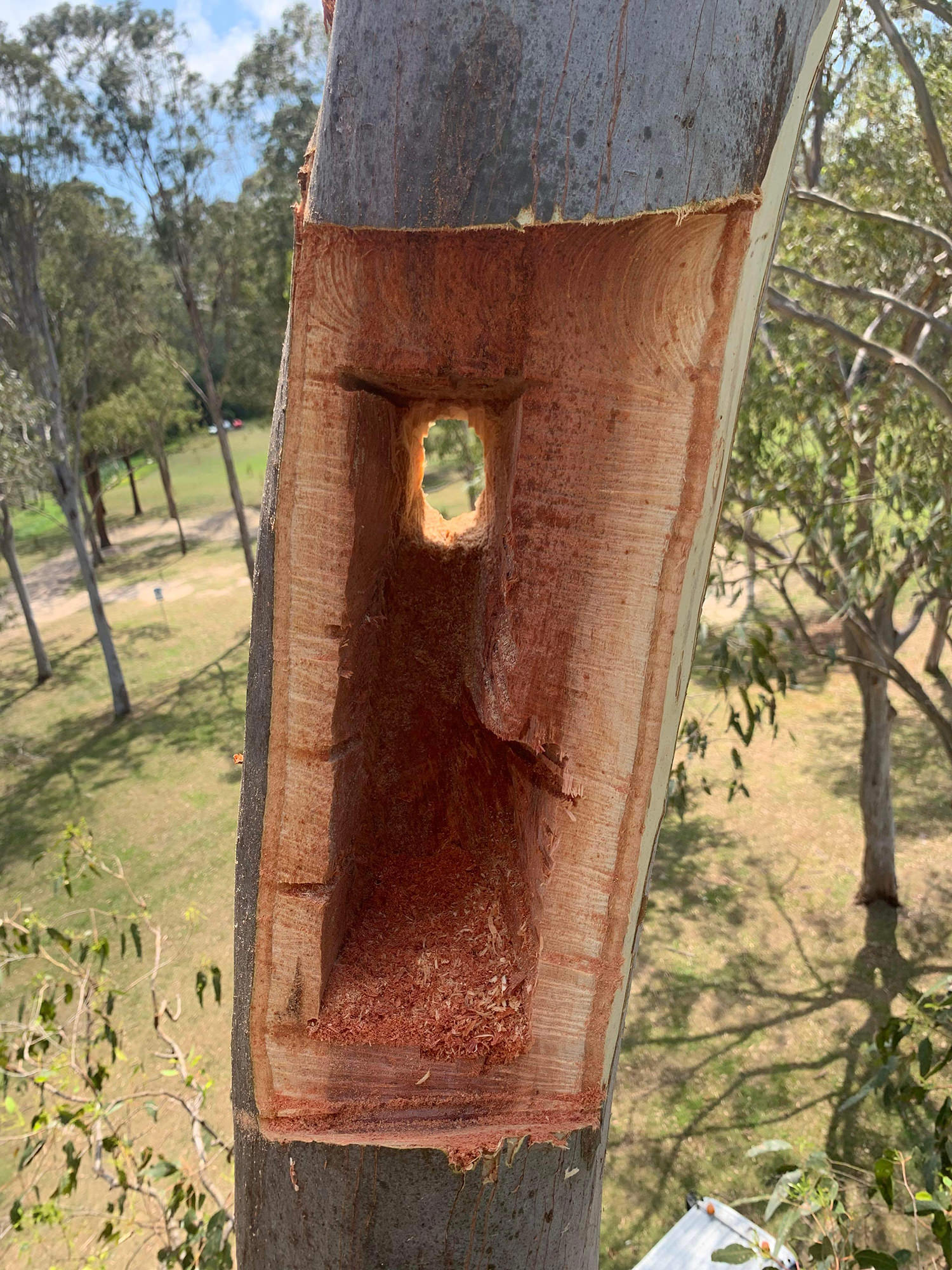
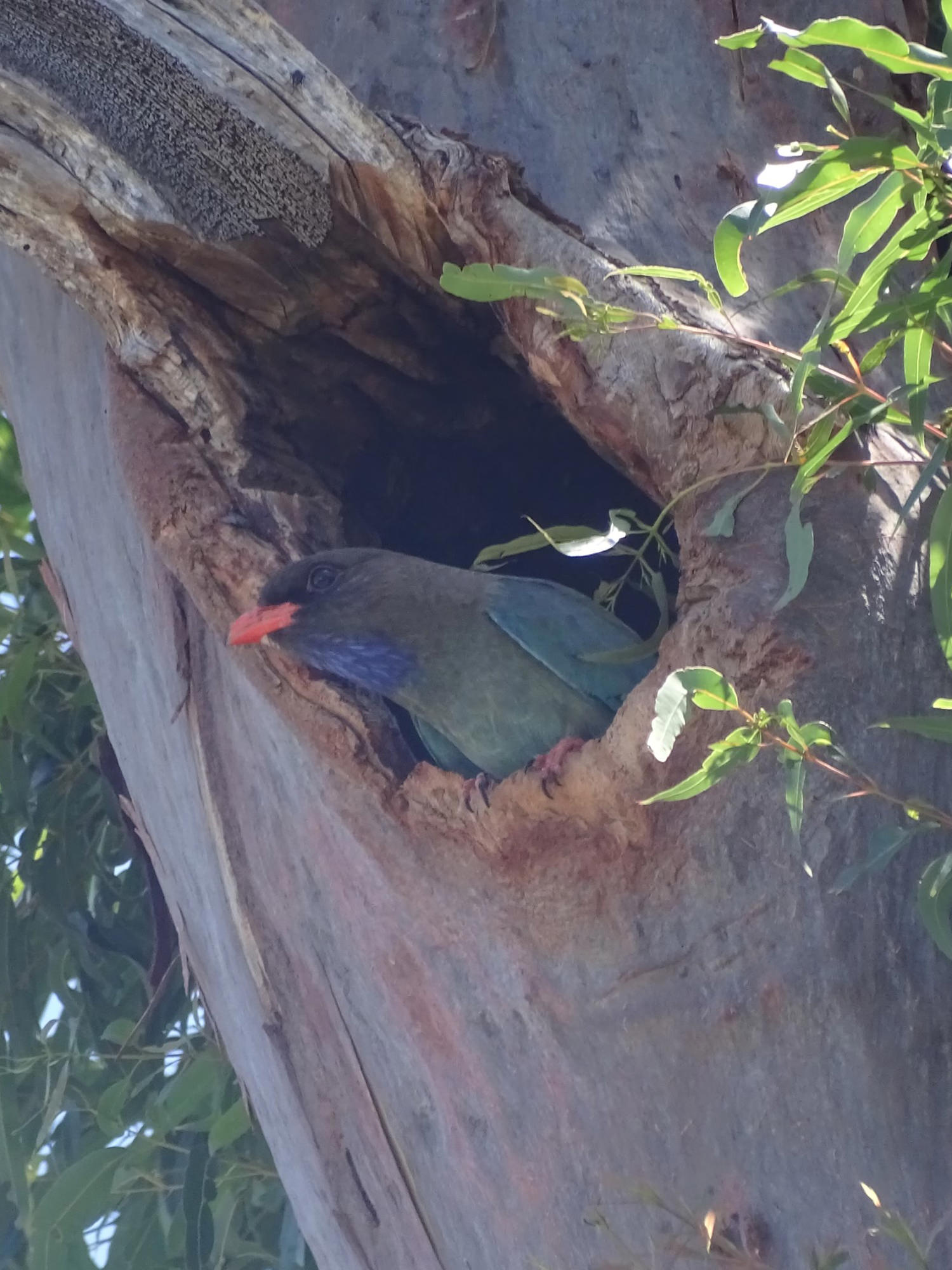
Chainsaw hollows carved into either live or dead trees generally remain cooler and more humid throughout the day when compared with nest boxes which track ambient temperatures throughout the day. This is mainly due to the fact that the wood that surrounds chainsaw hollows is much thicker and better insulated than the walls of nest boxes.
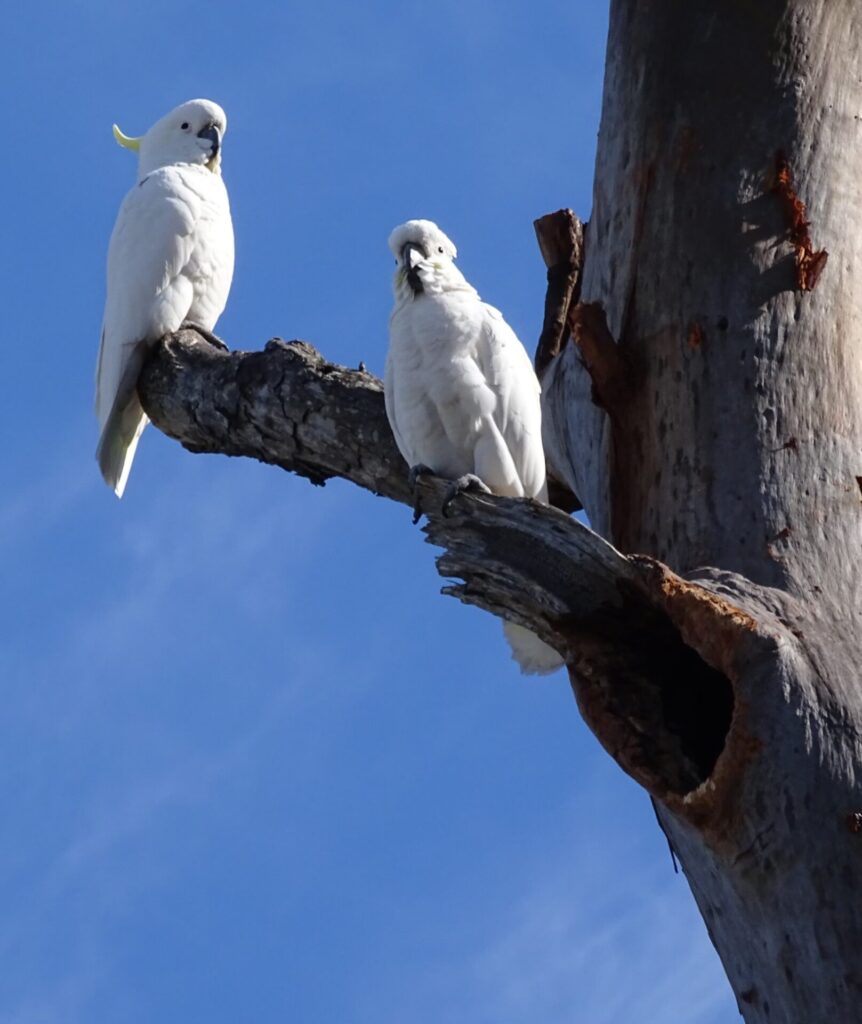
and Sulphur-crested Cockatoos.
When deciding where to place a nest box, the position of the sun throughout the day is a major consideration. The preferred orientation for nest boxes is east or south facing to avoid high temperatures in summer unless suitable shade is available to minimise heat from the midday sun from a westerly orientation. Some glider species may prefer north or west facing nest boxes during winter months, but the majority of the time avoiding westerly sun is preferred. Orientation is still a consideration when determining placement for chainsaw hollows, but it is not as important as the hollow is within the tree itself.
Other considerations when installing chainsaw hollows or nest boxes are the tree species they are being installed in and the provision of habitat resources (food, water and shade) for hollowdependent wildlife in the surrounding environment. Ideally, the surrounding environment will have a nearby waterbody and a variety of feed trees such as different Acacia and Eucalypt species, to provide foraging opportunities for a diverse array of wildlife all year round.
Article by Ian Parsons
Land for Wildlife Officer
Logan City Council
Photos by Jason Harris-organ and Steve Collom (Habi-Tec Conservation Arboriculture)
References & Further Reading
Best K, Haslem A, Maisey AC, Semmens K & Griffiths SR (2022) Occupancy of chainsaw-carved hollows by an Australian arboreal mammal is influenced by cavity attributes and surrounding habitat. Forest Ecology and Management, 503, 119747.
Gibbons P & Lindenmayer D (2002) Tree Hollows and Wildlife Conservation in Australia. CSIRO Publishing.
Griffiths SR, Robert KA & Jones CS (2022) Chainsaw hollows carved into live trees provide well insulated supplementary shelters for wildlife during extreme heat. Wildlife Research, 49(7), 596-609.
Griffiths SR, Semmens K, Watson SJ & Jones CS (2020) Installing chainsawcarved hollows in medium-sized live trees increases rates of visitation by hollow-dependent fauna. Restoration Ecology, 28(5), 1225-1236.
Terry W, Goldingay RL & van der Ree R (2021) Can chainsaw carved hollows provide an effective solution to the loss of natural tree cavities for arboreal mammals? Forest Ecology and Management, 490, 119122.
Terry W (2021) DIY Habitat: my photos show chainsaw-carved tree hollows make perfect new homes for this mysterious marsupial. The Conversation. https://theconversation.com/diy-habitat-my-photos-show-chainsaw-carved-tree-hollows-make-perfect-new-homes-for-this-mysterious-marsupial-159639
